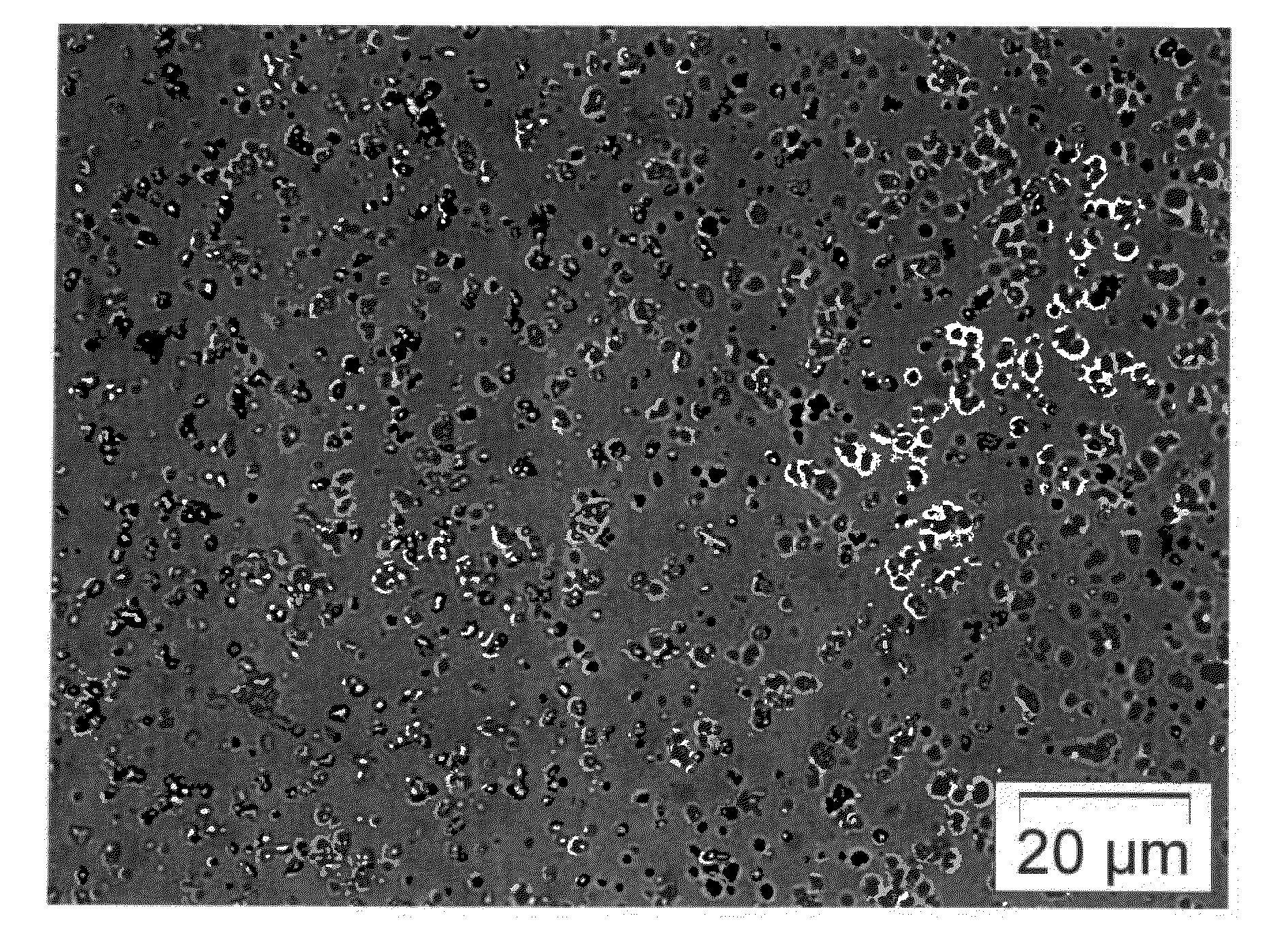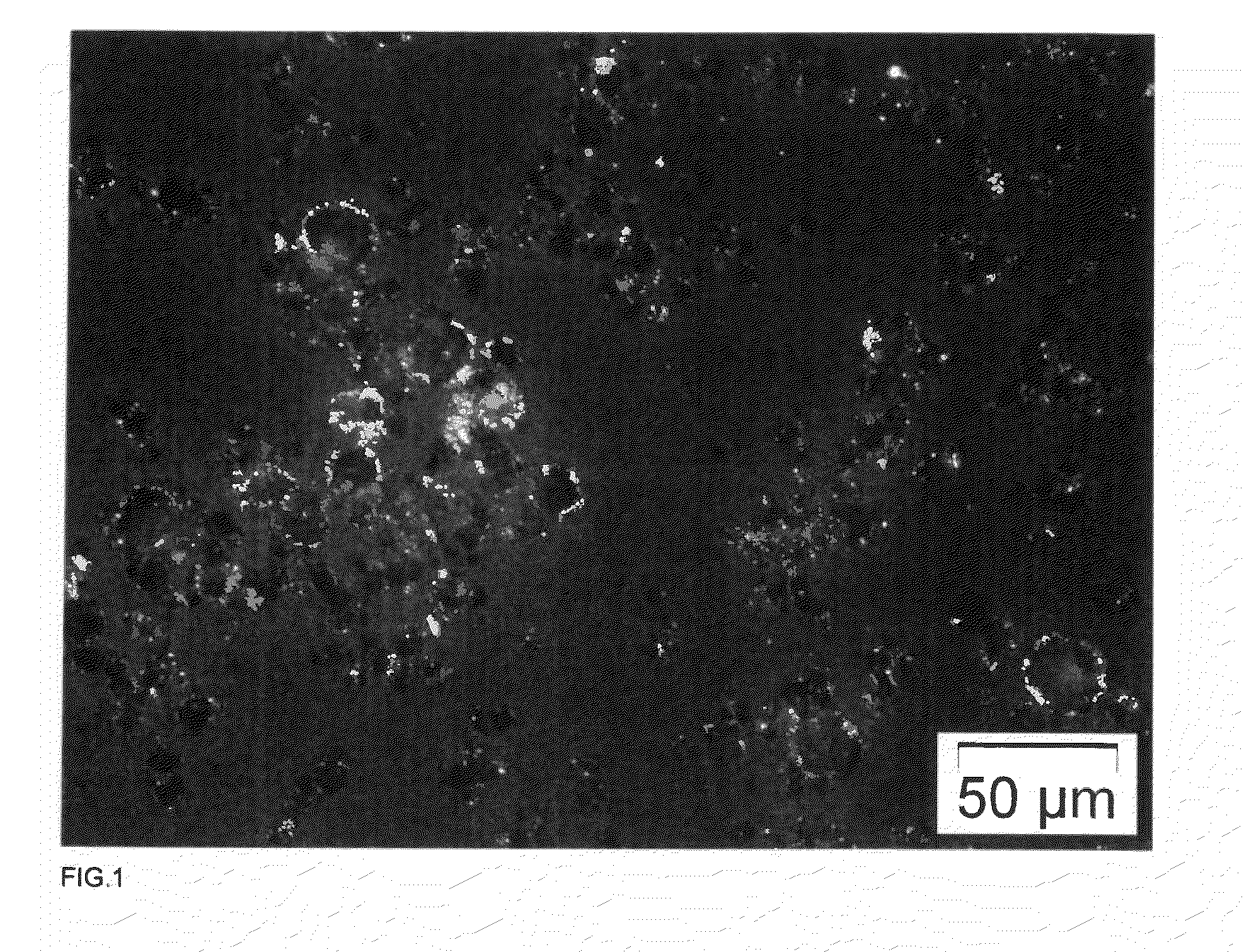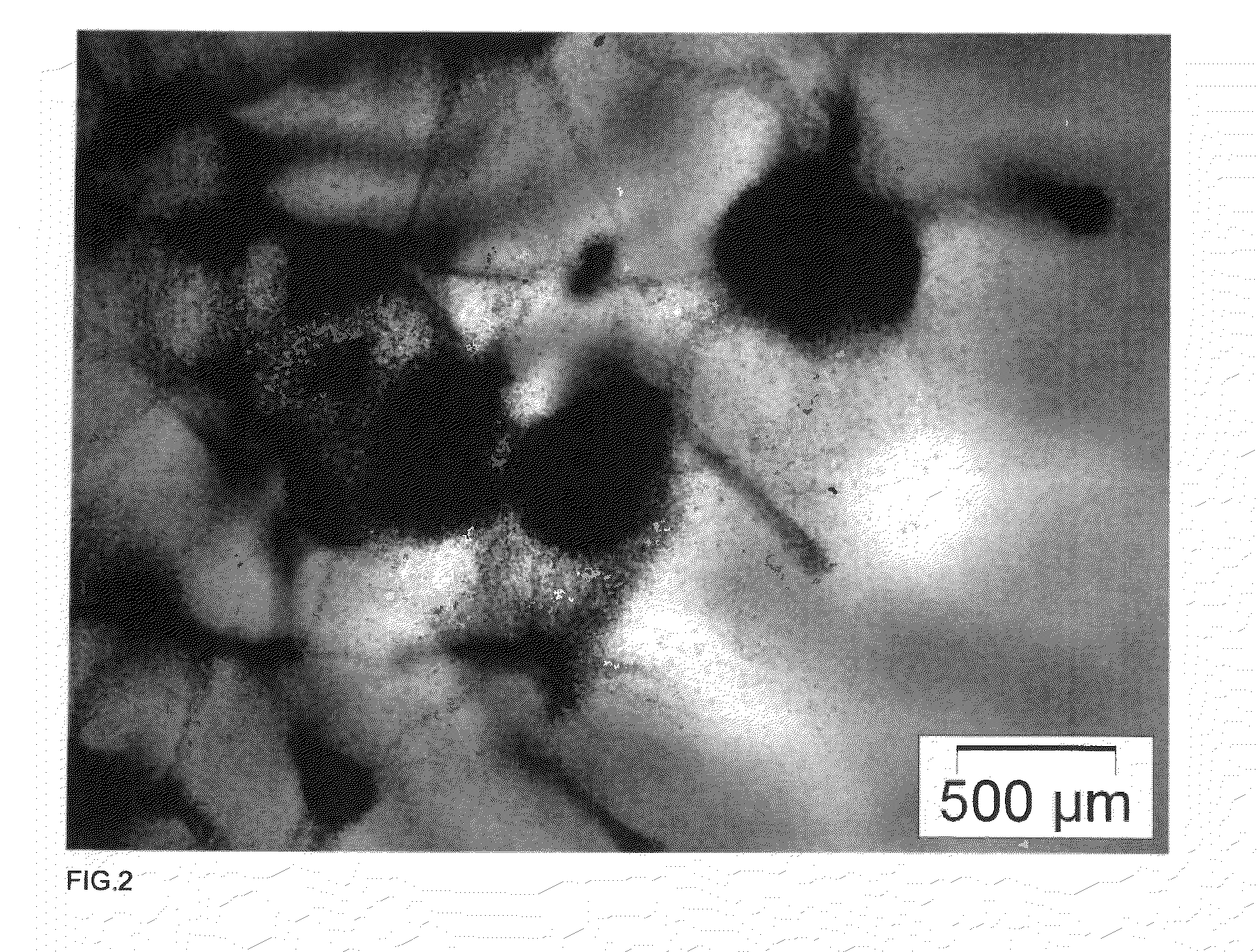Crystalline active ingredient microparticles, method for producing the same and use thereof in drugs
- Summary
- Abstract
- Description
- Claims
- Application Information
AI Technical Summary
Benefits of technology
Problems solved by technology
Method used
Image
Examples
example 1
[0071]A 100-ml stirred vessel with blade stirrer is charged with 160 g of Y-stabilized zirconium oxide spheres with a diameter of 0.5 mm plus 30 ml water. A solution of 1.5 g drospirenone in 6.25 ml ethanol / water 4:1 (v / v) is added, with stirring. After precipitation of a mainly amorphous phase, transformation to the crystalline modification begins after approximately 2 min. This is completed after 10 to 15 min. After completion of the phase transformation, a solution of 4.5 g drospirenone in 18.75 ml ethanol / water 4:1 (v / v) and in the same ratio 90 ml water is added dropwise within 15 min, with stirring at 1500 rpm. Simultaneously, with approximately constant filling level, product suspension is drawn off. Addition and product withdrawal can also take place quasicontinuously in smaller portions without any adverse effect on the result, if the above time frame is maintained. After the end of addition, to make the yield complete, approx. 60 ml water is used for rinsing. Alternatively...
example 2
Spray-Drying+Granulometric Analysis of the Solid Form
[0073]15 g of hydroxypropylmethylcellulose (HPMC) Methocel E5 is added to 200 g of the aqueous suspension according to Example 1 and stirred until the HPMC has dissolved completely. The suspension is spray-dried in a Yamato / QVF GA32 laboratory spray-dryer by means of a two-substance nozzle under the following conditions:
[0074]Feed: 4-5 g / min
[0075]Drying air: 0.5 m3 / min
[0076]Nozzle pressure: 2.5 bar (gauge)
[0077]Inlet temperature: 180° C.
[0078]Outlet temperature: 70-75° C.
[0079]8 g of product powder is separated in a product filter
[0080]Granulometric analysis is carried out by laser diffraction (Sympatec Helos, RODOS dispersing system):
[0081]d16=2.0 μm, d50=5.2 μm, d99=17.4 μm, d100=20.6 μm
example 3
Release of Primary Particles From the Solid Form (Micrographs)
[0082]A small amount of the solid form according to Example 2 is placed on the motionless surface of water. The disintegration process of the solid form is observed under a transmitted-light microscope. FIG. 1 shows the spray-dried solid form. The primary particles of the active substance, readily discernible under polarized light, are embedded in the surface of the spherical HPMC particles. FIG. 2 to FIG. 5 show the individual phases of the release process. It is shown that whereas the excipient goes into solution, the particles of active substance are released as particles without aggregation within 1-3 min on a motionless water surface. This process can be speeded up by stirring.
PUM
| Property | Measurement | Unit |
|---|---|---|
| Size distribution | aaaaa | aaaaa |
| Length | aaaaa | aaaaa |
| Length | aaaaa | aaaaa |
Abstract
Description
Claims
Application Information
 Login to View More
Login to View More - R&D
- Intellectual Property
- Life Sciences
- Materials
- Tech Scout
- Unparalleled Data Quality
- Higher Quality Content
- 60% Fewer Hallucinations
Browse by: Latest US Patents, China's latest patents, Technical Efficacy Thesaurus, Application Domain, Technology Topic, Popular Technical Reports.
© 2025 PatSnap. All rights reserved.Legal|Privacy policy|Modern Slavery Act Transparency Statement|Sitemap|About US| Contact US: help@patsnap.com



